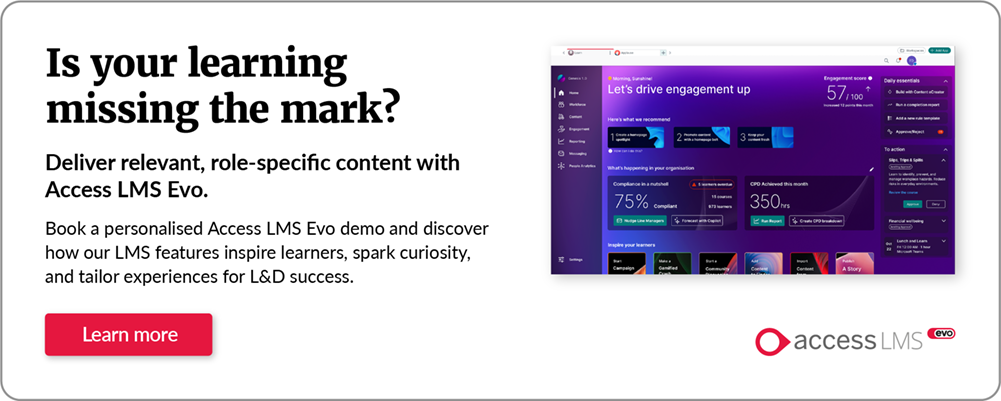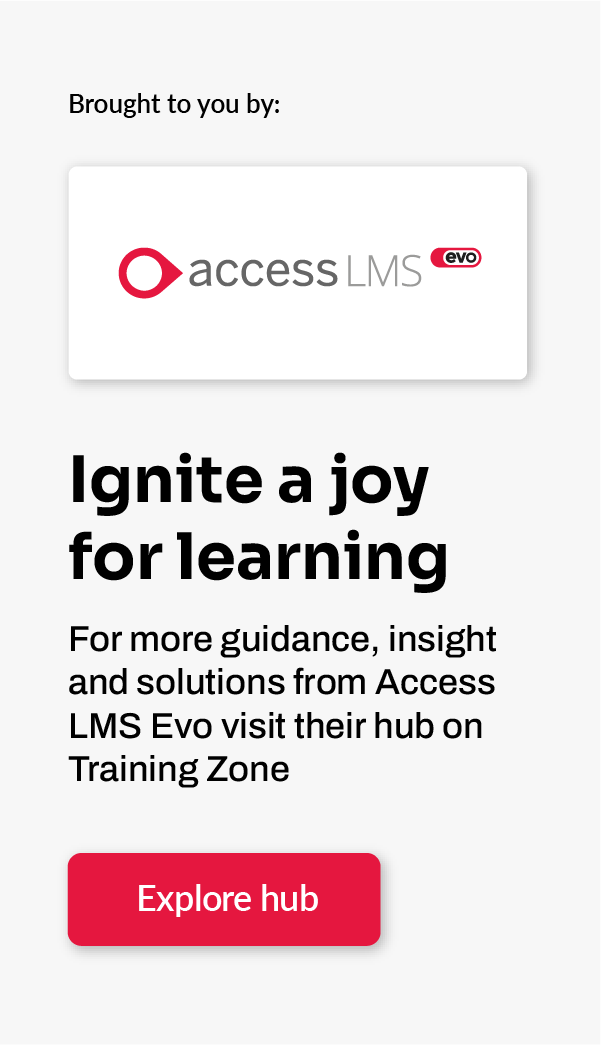In a world of frequently updated regulations and new challenges, it’s no surprise that compliance is moving quickly.
Organisations need to be able to keep up and adapt with the landscape as it develops, without their compliance demands getting left behind.
Implementing an LMS for compliance is the ideal way to create a streamlined process and keep everything in one place. This will ensure that you are in a position to protect your organisation, employees and customers, whilst abiding by the ever-changing regulations.
Here, we’ll guide you through:
- How an LMS can be used for compliance training management
- How to use learning management software for successful compliance training
- How an LMS improves the employee onboarding experience
- Navigating ongoing and annual compliance training with an LMS
How an LMS can be used for compliance training management
A Learning Management System (LMS) for compliance training management is an online training platform that covers the essential training surrounding compliance. Whilst it varies depending on the platform itself, it should include the following tools:
- Trackable eLearning courses
- Automatic system reports on compliance
- A clear audit trail
- Automated reminders and refresher training
- Customised certificate paths
- Key compliance metrics
Ensuring that everyone within your organisation understands the compliance demands is vital to any business, but it is especially relevant to organisations where non-compliance presents a high risk, such as financial services and health and safety.
Being in a position to offer training at scale, particularly for large organisations where there is a lot of ongoing training within different departments, is a vital component that can be used within a compliance training LMS.
How to successfully use an LMS for compliance training
Learning management software is a valuable tool used by many compliance managers and L&D teams. Due to the frequency and variety of assessments that need to be kept track of, often on an annual basis, there is no room for error.
Taking on this responsibility as a manual task can lead to errors occurring without it being noticed. Using a compliance training management platform where alerts, messages and certification is provided will reduce the problems that arise.
For compliance managers, the buck usually stops with them meaning it is their responsibility to implement, track and report back on compliance training.
Key areas where an LMS can add great value includes:
- Time management and keeping on top of necessary training
- Getting the right data and information to the right people at the right time
- Content that is updated in line with legislation and regulatory changes
- Reducing stress by automating certain aspects
- Providing a clear understanding of how learners are performing and where there are gaps
If these aspects are not handled correctly, it can be detrimental to your company as a whole. This could involve fines, the loss of licenses and will inevitably impact the reputation of your company, something which can be extremely difficult to undo.

How a compliance LMS improves the employee onboarding experience
It is a tricky task to keep on top of onboarding when there is an influx of new starters. Pair this with employees moving roles internally and it can feel like a never ending stream of onboarding tasks and activities. For compliance or L&D teams, this often means getting employees up to speed with the information they need to be able to do their job effectively.
Automating the process will reduce a lot of admin time and get people ready in a much more efficient way, meaning that they will be in a position to show their strengths and add value to the wider business more quickly.
It may be the case that compliance training and the passing of assessments are needed for a manager to successfully sign off a probationary period, which makes delays far more problematic. This can even be detrimental to the employees onboarding process and their feeling of belonging within the company as a whole.
A learning pathway can be set up on an LMS for all new starts which will allow them to:
- View all of the information they need at the relevant time
- Test their competence
- Review and sign internal policies
- Get alert emails letting them know when further compliance training is due
A compliance LMS will automate many tasks and in turn, reduce the worry that can come with compliance training expectations. It means that onboarding training cycles can tick along automatically, removes the burden of manually assigning training to each individual and ensures policies are read and signed on time.
A compliance training LMS will also keep track of the follow up tasks and admin that usually goes along with this, allowing compliance managers to focus on other aspects of their role.
Using an LMS to stay on top of ongoing and annual compliance training
It’s important for compliance training to be completed on an annual basis which can bring its own set of challenges. Employees may remember small sections of information from previous training which can then make the assessments feel like a memory game and not a learning and training exercise.
This also wastes time, and therefore resource in going over information they already know. Instead, you want to be able to create engaging content that will challenge people, provide new information, and offer something they can get stuck into.
Tools like diagnostic assessments will check in with employees and find out where their strengths lie and what they do need a refresher on. This will create a unique and targeted learning experience based on gaps in their knowledge, ensuring that they don’t have to sit through just another compliance course.
It’s also important to look at compliance training from the perspective of a compliance manager, who will need to assign the training to the correct people exactly when they need it. By having a clear dashboard view of how many people have completed compliance training, they can track accordingly.
Automating this process will take pressure off the team member and allow them to focus on other areas, such as keeping up to date with the latest legislations.
Read the deeper-dive article published by The Access Group to learn how to keeping up to date with compliance data management and create a culture of compliance within your organisation.







